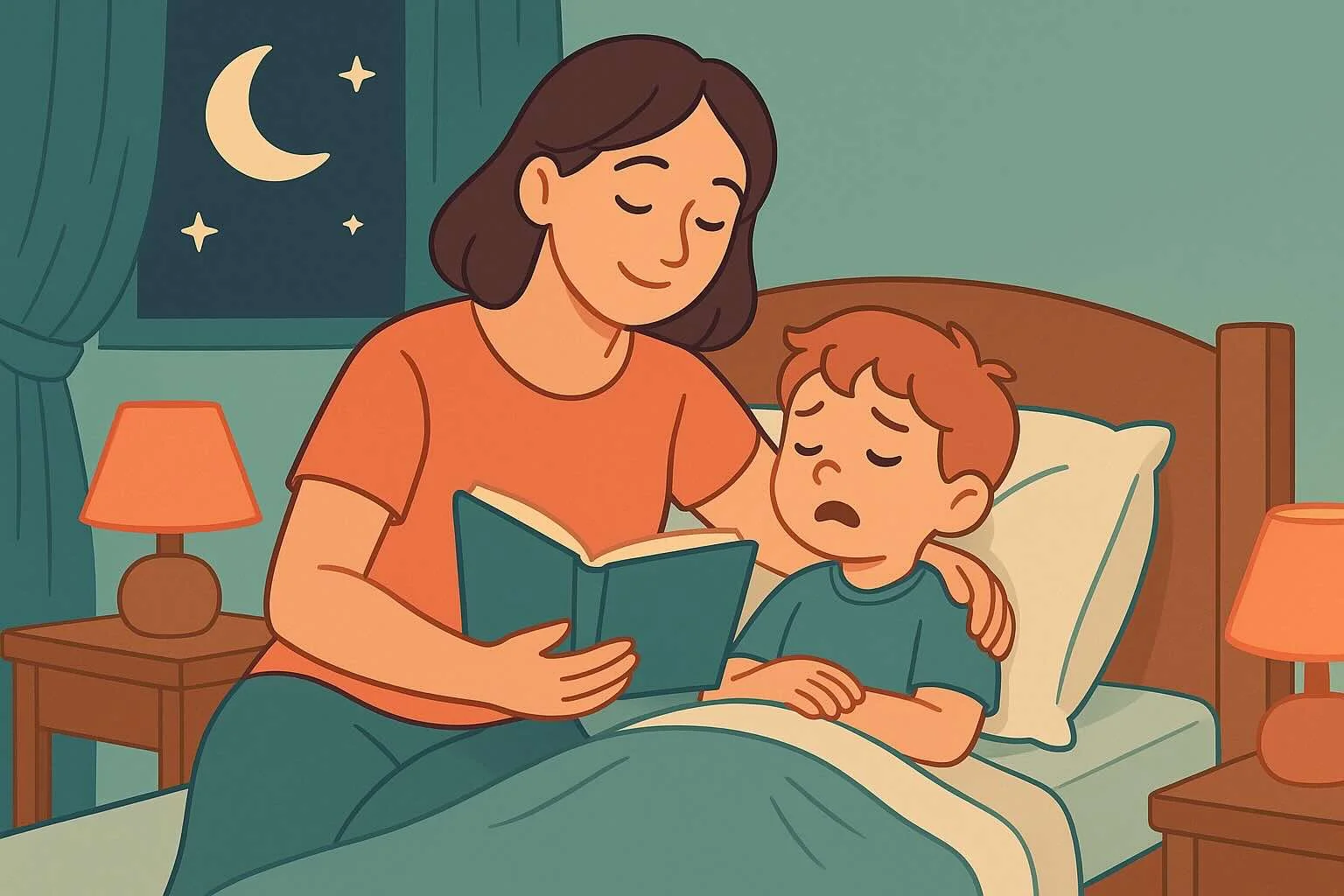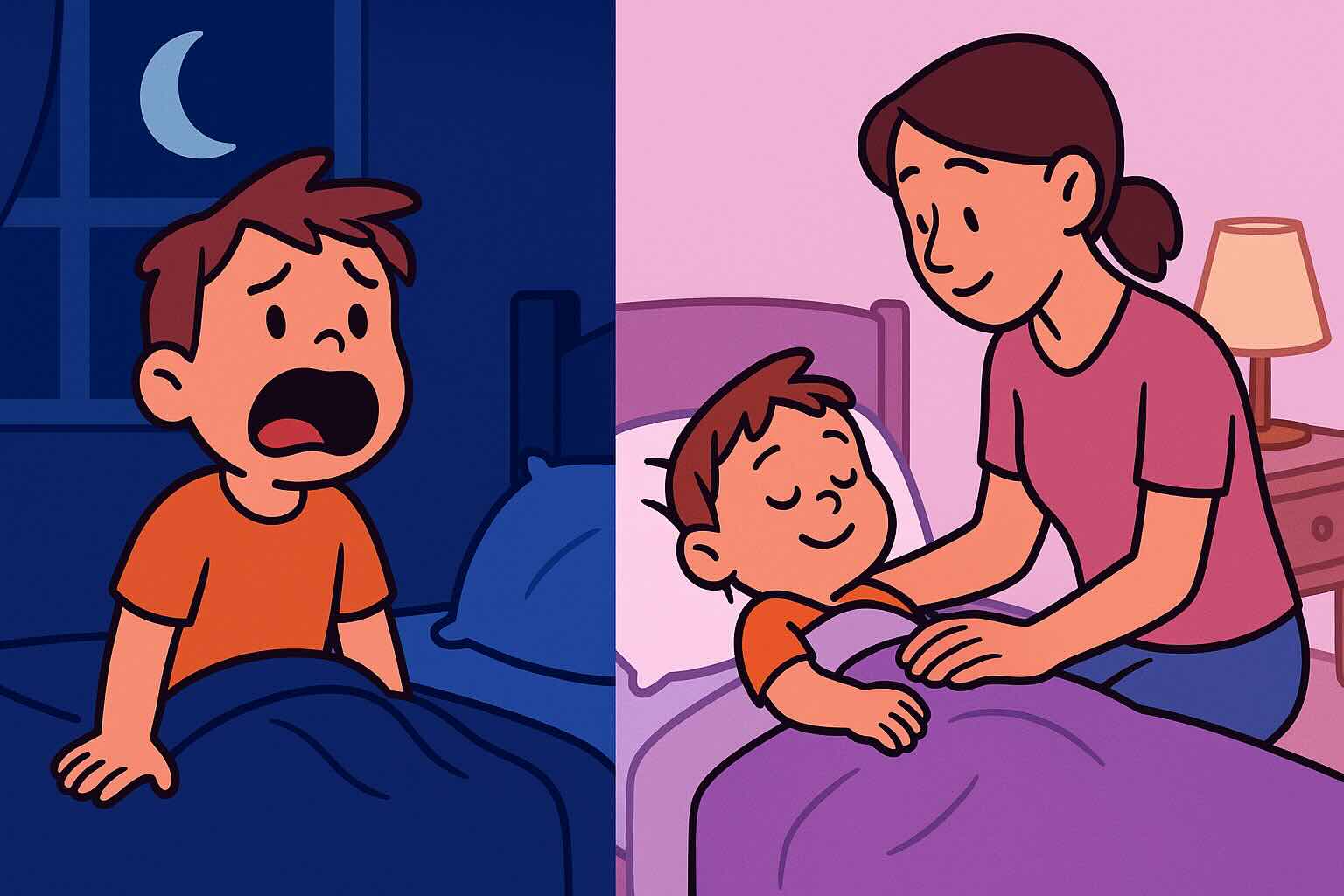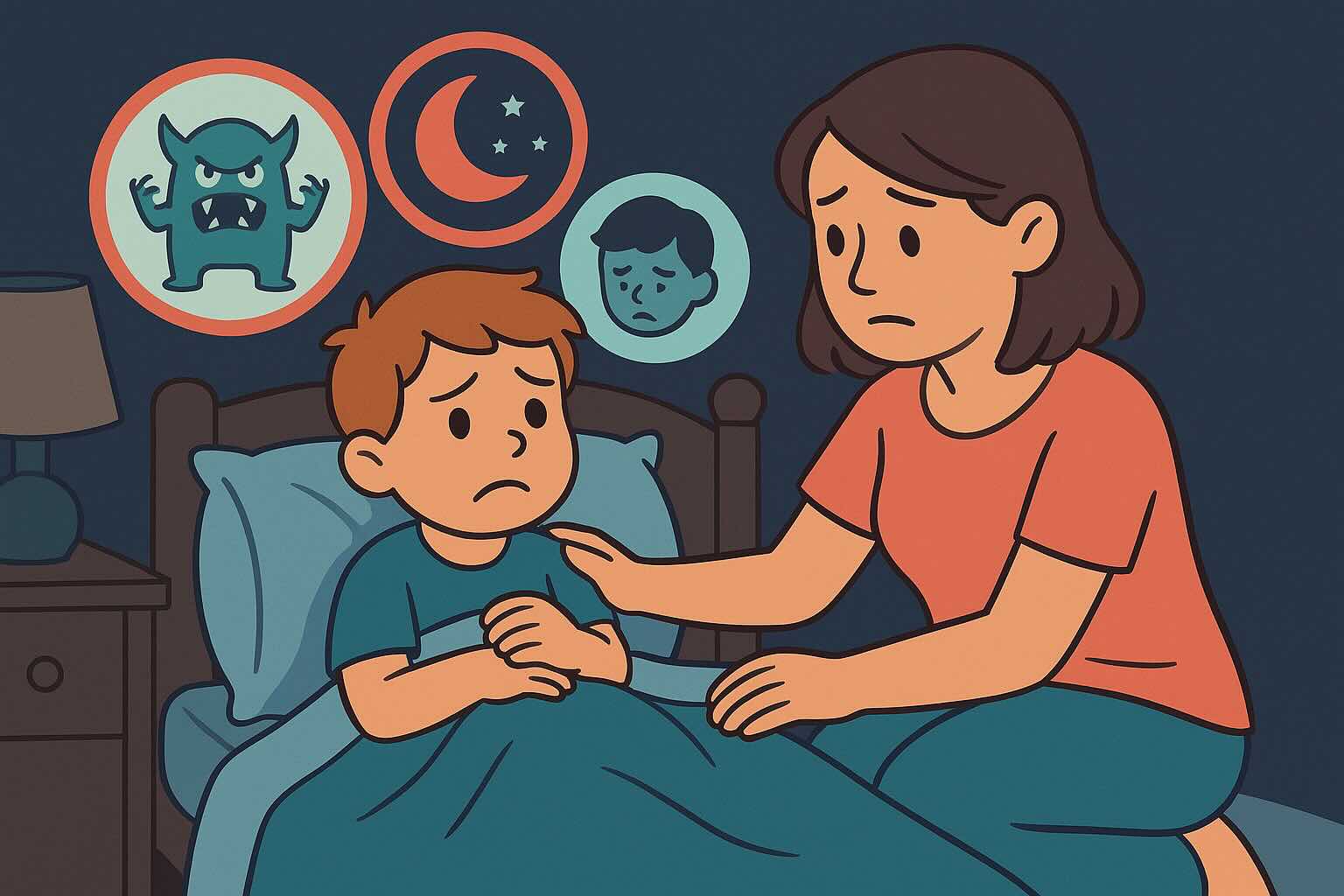3 Year Old Bedtime Routine: 7 Steps to Peaceful Sleep

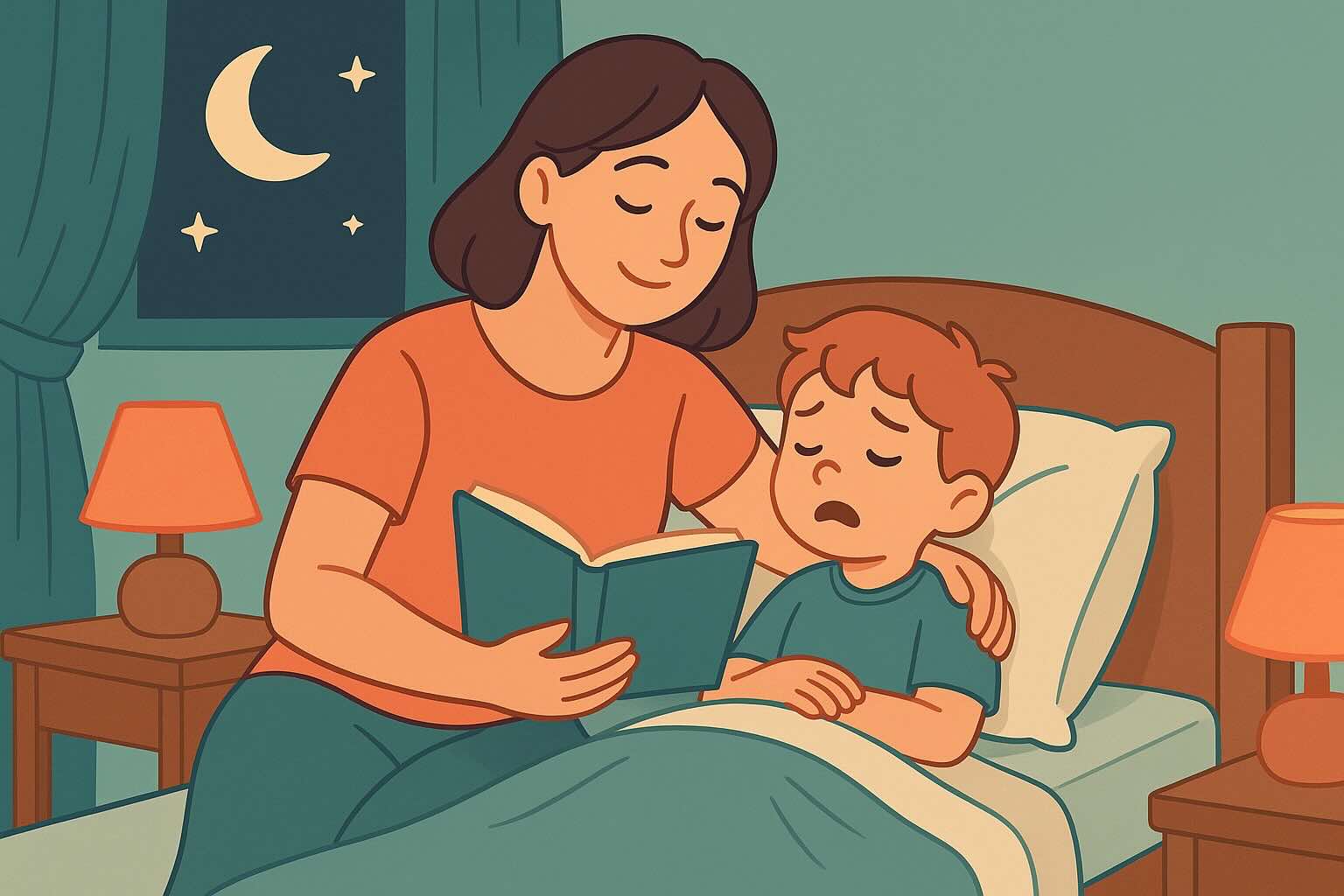
Peaceful 3-Year-Old Bedtime: Watch This First
Creating a peaceful bedtime routine for your 3-year-old can feel like an impossible task when you're facing nightly battles, endless requests for "just one more" story, and a child who seems to have boundless energy right when they should be winding down.
If you're exhausted from the bedtime struggle, you're not alone. Research shows that 84% of parents report bedtime difficulties with 3-year-olds, making this one of the most common parenting challenges during the preschool years. Many parents find success by first addressing bedtime battles with proven strategies that work for 85% of families.
The good news? With the right approach and understanding of your 3-year-old's developmental needs, you can transform bedtime from chaos to calm. This comprehensive guide will walk you through creating an effective bedtime routine using our proven 3-step sleep method, specifically tailored for 3-year-olds.
Understanding Your 3-Year-Old's Sleep Needs
Before diving into routines, it's crucial to understand what your 3-year-old needs for healthy sleep development.
Sleep Requirements for 3-Year-Olds
Three-year-olds need approximately 10-12 hours of sleep in a 24-hour period. This typically breaks down to:
- Nighttime sleep: 10-11 hours
- Daytime nap: 1-2 hours (if still napping)
- Total sleep: 11-13 hours per day
Developmental Factors Affecting Sleep
At age 3, several developmental milestones impact sleep patterns:
Growing Independence: Your 3-year-old is asserting their will and testing boundaries, which naturally extends to bedtime resistance.
Language Development: They can now articulate their wants and needs, leading to more sophisticated stalling tactics like "I need water" or "I forgot to tell you something."
Imagination Explosion: Developing imagination can create bedtime fears or excitement that makes settling difficult.
Emotional Regulation: Three-year-olds are still learning to manage big emotions, and the transition to bedtime can trigger anxiety or frustration.
Understanding these factors helps you respond with empathy while maintaining necessary boundaries.
The 3-Step Sleep Method for 3-Year-Olds
Our evidence-based 3-step method transforms bedtime by creating predictability and reducing power struggles. Here's how to implement it with your 3-year-old:
Step 1: Create Your Story
Your "story" is the detailed plan of exactly what will happen at bedtime and how you'll respond to resistance. For 3-year-olds, this story should include:
The Bedtime Sequence:
- Transition warning (15 minutes before routine starts)
- Bath or wash-up (10-15 minutes)
- Getting dressed for bed (5-10 minutes)
- Brushing teeth (5 minutes)
- Reading stories (10-15 minutes)
- Final goodnight routine (5 minutes)
- Lights out
Your Response Plan:
- How you'll handle requests for "one more" book
- What you'll do if they get out of bed
- How you'll respond to stalling tactics
- Your comfort approach for fears or upset
Sample Story for 3-Year-Old: "At 7:00 PM, I'll give a 15-minute warning for bedtime routine. We'll take a quick bath, put on pajamas, brush teeth, and read two books. After books, I'll tuck them in, sing our goodnight song, and turn off the lights. If they ask for more books, I'll say 'You want another story AND bedtime is now. More books tomorrow.' If they get out of bed, I'll calmly walk them back without talking."
Step 2: Share Your Story
Share your bedtime plan with your 3-year-old during a calm moment, not right before bed. Three-year-olds respond well to visual and simple explanations.
How to Share with a 3-Year-Old:
"Starting tonight, we have a new bedtime routine! First, we'll take a bath and splash with your toys. Then we'll put on cozy pajamas and brush our teeth to keep them healthy. We'll read two special books together, then I'll tuck you in and sing our song. After that, it's time for sleep so your body can grow big and strong!"
Use Visual Aids: Create a simple bedtime chart with pictures showing each step. Let your 3-year-old help make or decorate it. Visual reminders help them understand what comes next and feel more in control.
Address Concerns: If your child expresses worries, acknowledge them: "You're worried about being alone in your room. Your stuffed animals will keep you company, and Mommy and Daddy are always nearby."
Step 3: Follow Through
Consistency is crucial with 3-year-olds who are natural boundary-testers. Your follow-through should be calm, brief, and predictable.
Follow-Through Strategies:
For "One More" Requests:
- Stay calm and brief
- Use "AND" instead of "BUT": "You want more water AND bedtime is now"
- Don't negotiate or explain extensively
For Getting Out of Bed:
- Use the "boring return" method
- Walk them back silently
- Minimal eye contact or conversation
- Repeat as many times as necessary
For Bedtime Fears:
- Validate feelings: "You feel scared"
- Provide brief comfort
- Stick to the routine: "Your nightlight is on AND it's time to sleep"
Remember, most 3-year-olds will test new boundaries for 3-7 nights before accepting them.
Age-Specific Bedtime Routine for 3-Year-Olds
Here's a detailed, step-by-step routine tailored for 3-year-old developmental needs:
7:00 PM - Transition Warning
"In 15 minutes, it will be time to start getting ready for bed. Finish your last activity."
This warning helps 3-year-olds mentally prepare for the transition and reduces meltdowns from abrupt changes. If your child still struggles with transitions, our transition strategies guide offers additional support for managing daily changes.
7:15 PM - Bath Time (10-15 minutes)
Make bath time fun but brief:
- Use a timer they can see
- Allow 2-3 bath toys
- Let them help wash themselves
- Keep water temperature comfortable but not too warm (can be stimulating)
7:30 PM - Getting Dressed (5-10 minutes)
Support growing independence:
- Lay out pajamas together
- Let them choose between two options
- Offer help but encourage self-dressing
- Make it playful: "Can you put your arm through the sleeve like a snake?"
7:40 PM - Teeth Brushing (5 minutes)
Create a positive dental routine:
- Use a fun toothbrush and kid-friendly toothpaste
- Sing a brushing song or count to 20
- Let them brush first, then you finish
- Make faces in the mirror together
7:45 PM - Story Time (10-15 minutes)
This is often the favorite part for 3-year-olds:
- Choose 2-3 short books or one longer book
- Let them pick from pre-selected options
- Read in their bedroom to create sleep associations
- Use calm, soothing voice
- Cuddle together during stories
8:00 PM - Final Goodnight Routine (5 minutes)
Create special connection moments:
- Tuck them in snugly
- Share gratitudes: "What was your favorite part of today?"
- Sing a lullaby or say a special phrase
- Give hugs and kisses
- Turn on nightlight if needed
8:05 PM - Lights Out
- Say goodnight and leave the room
- Close door (or leave slightly open if preferred)
- Begin your response plan if they get up
Common 3-Year-Old Bedtime Challenges and Solutions
Challenge 1: "I Need Water/Bathroom/One More Hug"
Why It Happens: 3-year-olds are masters at finding reasons to delay bedtime. These requests often increase when they realize bedtime is non-negotiable.
Solution:
- Address genuine needs during the routine (water cup, bathroom visit)
- For extra requests, acknowledge and redirect: "You want another hug AND you already had your bedtime hugs. More hugs tomorrow."
- Stay consistent—giving in occasionally reinforces the behavior
Challenge 2: Leaving the Room Repeatedly
Why It Happens: Testing boundaries is normal at this age. They're learning about limits and consequences.
Solution:
- Use the "broken record" approach
- Walk them back calmly each time
- Don't engage in conversation: "It's time for sleep"
- Most children stop after 3-5 consistent nights
Challenge 3: Bedtime Fears
Why It Happens: Imagination develops rapidly at age 3, creating new fears about darkness, monsters, or being alone.
Solution:
- Validate their feelings without dismissing them
- Provide comfort items: special stuffed animal, nightlight
- Use "monster spray" (water in spray bottle) for fun fear-busting
- Address fears during daytime, not at bedtime
Challenge 4: Transitioning from Crib to Bed
Why It Happens: This major transition can disrupt sleep patterns and create new bedtime challenges.
Solution:
- Make the transition during a calm period
- Keep everything else about bedtime the same
- Use a bed rail for safety and security
- Expect some regression for 1-2 weeks
Creating the Ideal Sleep Environment for 3-Year-Olds
Your 3-year-old's bedroom setup significantly impacts their ability to fall asleep and stay asleep.
Room Temperature and Comfort
- Keep room between 68-70°F (20-21°C)
- Use breathable pajamas and appropriate bedding
- Ensure comfortable mattress and pillow (if using one)
Lighting Considerations
- Use blackout curtains or shades for darkness
- Provide a dim nightlight if needed for comfort
- Avoid screens for at least 1 hour before bedtime
- Consider a red-light nightlight (less sleep-disrupting)
Sound Environment
- Use white noise machine if helpful for masking household sounds
- Keep bedroom quiet during bedtime routine
- Some 3-year-olds enjoy soft, slow lullabies
Safety and Comfort Items
- Ensure room is childproofed
- Provide favorite stuffed animal or blanket
- Keep comfort items consistent and accessible
- Remove stimulating toys from bed area
Sample Scripts for Common Bedtime Scenarios
Having prepared responses helps you stay calm and consistent during challenging moments.
When They Ask for "One More" Book
Instead of: "No, we already read three books!"
Try: "You really love our story time! We read our two books AND now it's time for sleep. Tomorrow we'll read more wonderful stories."
When They Say They're Not Tired
Instead of: "Yes, you are tired. Look how you're yawning!"
Try: "You don't feel tired right now AND your body needs sleep to grow. Rest time helps you have energy for playing tomorrow."
When They're Scared
Instead of: "There's nothing to be scared of!"
Try: "You feel scared. Your room is safe, and I'm nearby. Your teddy bear will keep you company tonight."
When They Get Out of Bed
Instead of: Long explanations about why they need to stay in bed
Try: "Time for sleep." (said calmly while walking them back to bed)
Adapting the Routine for Different Situations
Busy Weeknight Routine (20-25 minutes)
When time is limited, focus on essentials:
- Quick wash instead of full bath
- Help with pajamas for speed
- Quick teeth brushing
- One shorter book
- Brief goodnight cuddle
Weekend/Relaxed Routine (45 minutes)
When you have more time:
- Longer bath with extra play
- Let them dress themselves completely
- Extra story or song
- Longer cuddle time
- Share more about the day
Travel or Disrupted Routine
- Pack familiar comfort items
- Maintain the same sequence even if timing changes
- Use portable sound machine or familiar music
- Stick to core elements: story, cuddle, goodnight phrase
When to Adjust Nap Schedules
Many 3-year-olds still need naps, but some are transitioning away from them. Here's how to tell:
Signs Your 3-Year-Old Still Needs a Nap:
- Falls asleep easily for naps
- Sleeps 1-2 hours consistently
- Goes to bed by 8 PM and sleeps through the night
- Shows tired behavior in late afternoon
Signs It Might Be Time to Drop the Nap:
- Takes 30+ minutes to fall asleep for nap
- Naps but then stays awake until 9 PM or later
- Skips nap but goes to bed easily and sleeps 11+ hours
- No longer shows afternoon tiredness
Transition Strategy:
Instead of eliminating naps completely, try "quiet time":
- Same timing as old nap (1-3 PM)
- Child stays in room looking at books
- No pressure to sleep
- If they fall asleep, let them (limit to 1 hour)
Tracking Progress and Troubleshooting
What to Track:
- Bedtime start time
- How long routine takes
- Number of times child leaves room
- Wake-up time and mood
- Nap times and duration
Warning Signs to Address:
- Consistently taking more than 45 minutes to complete routine
- Child leaving room more than 5 times per night after first week
- Extreme distress that doesn't improve after 2 weeks
- Early morning wake-ups (before 6 AM) consistently
When to Seek Help:
- Sleep issues persist after 4-6 weeks of consistency
- Child shows signs of sleep disorders (snoring, frequent waking)
- Bedtime battles affect family functioning significantly
- You suspect underlying anxiety or developmental concerns
Building Long-Term Healthy Sleep Habits
The routine you establish now sets the foundation for years of healthy sleep. Focus on these key principles:
Consistency Over Perfection
- Same routine 80% of the time is better than perfect routine 50% of the time
- Maintain core elements even when life gets busy
- Get back on track quickly after disruptions
Gradual Independence Building
- Let them do more of the routine themselves over time
- Move from sitting on bed to chair nearby to hallway
- Encourage self-soothing skills gradually
Positive Sleep Associations
- Make bedtime pleasant, not punishment
- Focus on connection during routine
- Celebrate bedtime successes: "You went to sleep so peacefully!"
Related Resources for Better Sleep
For additional support with your 3-year-old's sleep, explore these related guides:
- Bedtime Battles Guide - Comprehensive strategies for ending bedtime struggles
- Healthy Sleep Habits Guide - Building foundation sleep patterns
- Nighttime Fears Complete Guide - Addressing bedtime anxiety and fears
- Night Wakings Guide - Solutions for middle-of-the-night disturbances
- Bedtime Fears Guide - Age-specific fear management strategies
- Sleep Training Myths Debunked - Evidence-based sleep information
- Transitioning Bedrooms Guide - Managing room changes and moves
- Child Afraid Alone Room - Building independence and comfort
Remember, every child is unique, and what works for one 3-year-old may need adjustment for another. The key is consistency, patience, and understanding that establishing new routines takes time.
Your dedication to creating a peaceful bedtime routine is an investment in your child's health, development, and your family's well-being. With patience and consistency, you'll soon enjoy calm, connected bedtimes that both you and your 3-year-old look forward to each night.
The challenging bedtime phase won't last forever, but the healthy sleep habits and positive associations you're building now will benefit your child for years to come. Trust the process, stay consistent, and celebrate the small victories along the way.
24/7 AI Parenting Assistant
Get instant, personalized advice with expert-curated parenting knowledge. Chat with your AI coach anytime, anywhere.
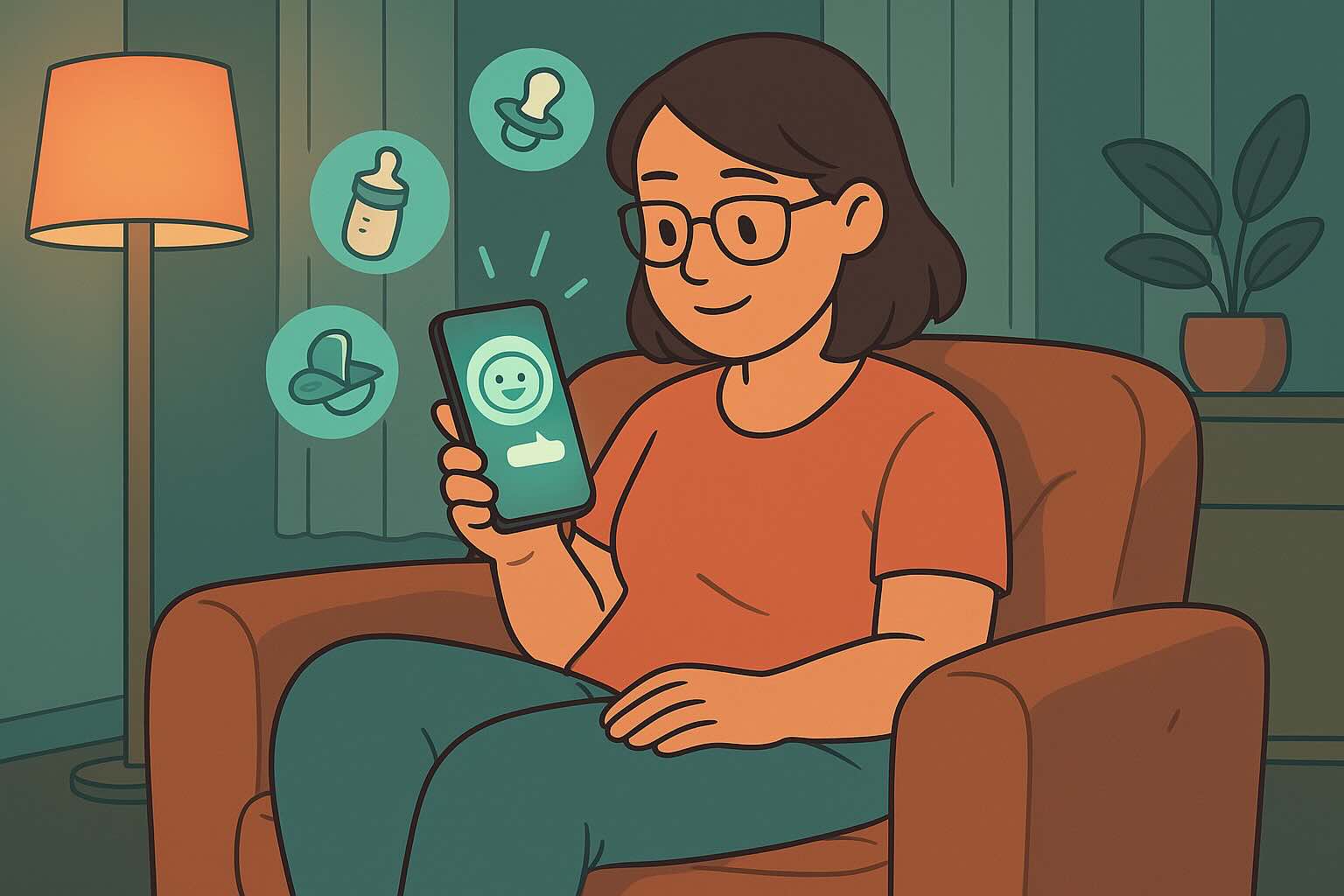
Expert Content Library
Access multimedia resources, articles, and expert-reviewed content organized by topics and your child's age.
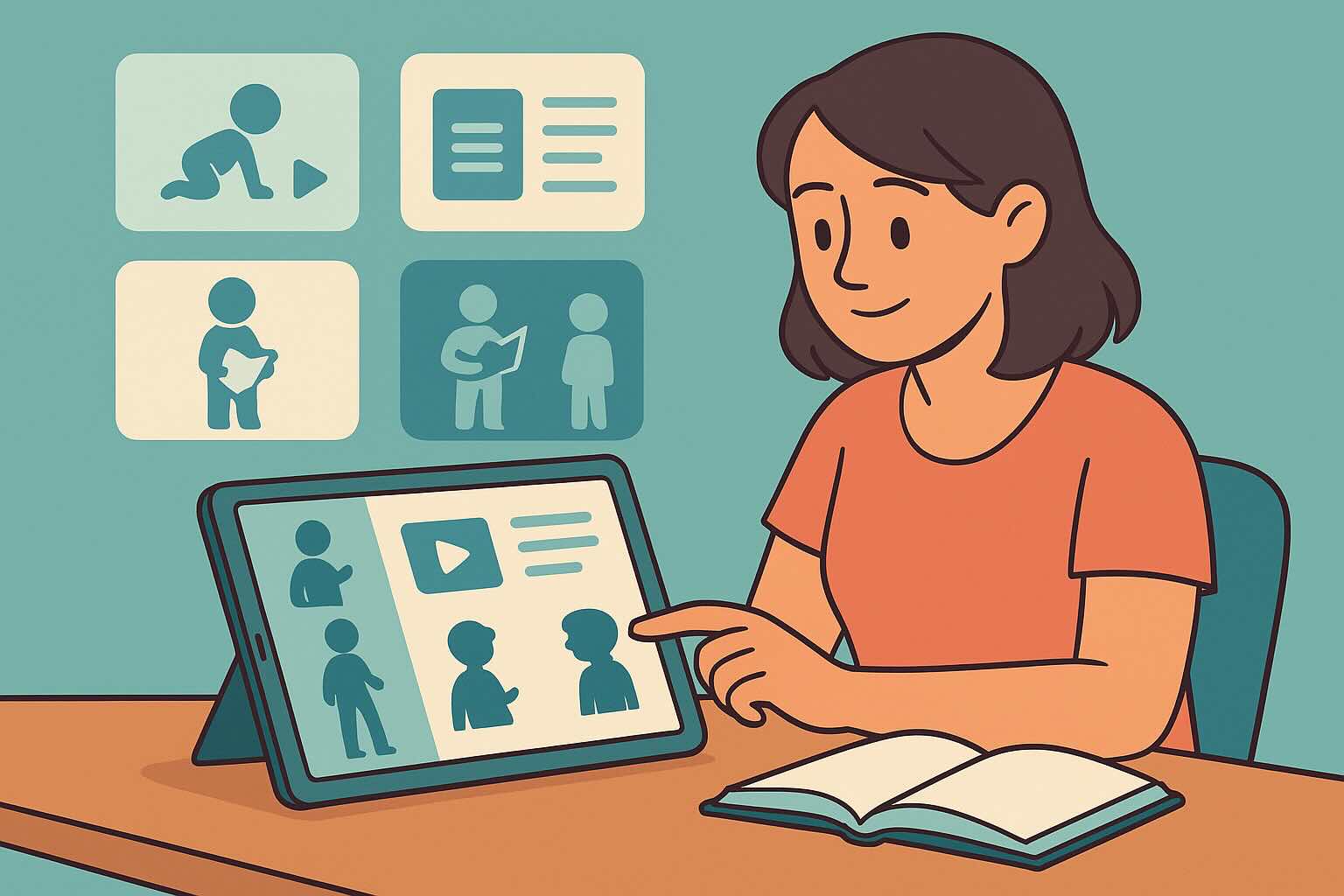
Get Your Free Sleep Training Toolkit
5-day email course + printable sleep log to help your baby sleep through the night
Frequently Asked Questions
Need personalized support?
RootWise's AI coach can provide tailored strategies for your specific situation, available 24/7 when you need it most.
Learn More About AI Coaching →